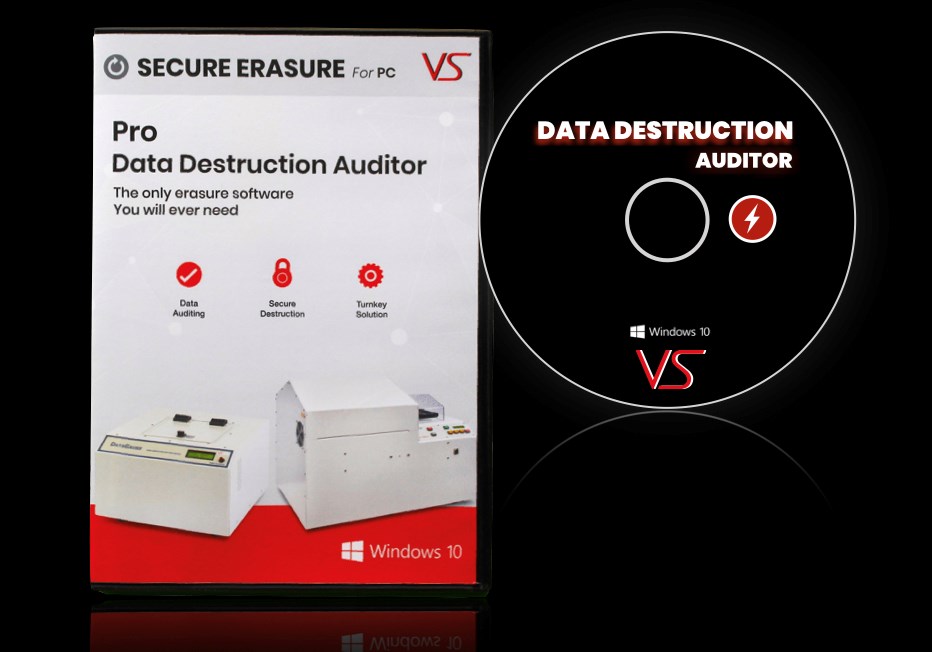The Important Nature of Data Damage in Upholding Computer System Security Providers and Protecting Against Unauthorized Gain Access To
In an age where data breaches and identification burglary are progressively common, the relevance of reliable information devastation can not be overemphasized. Organizations has to identify that the failing to effectively dispose of delicate information poses not only legal and monetary threats but likewise a potential erosion of customer depend on. Numerous techniques, from data cleaning to physical devastation, serve as crucial safeguards versus unapproved accessibility. Nevertheless, recognizing the effects of data destruction methods and compliance with guidelines raises crucial inquiries regarding the competence of present methods and their long-term feasibility despite progressing risks.
Value of Data Damage
In an increasingly electronic world, the significance of information devastation can not be overstated. As organizations generate vast amounts of delicate information, the potential effects of failing to properly manage and dispose of that information come to be increasingly serious. Information breaches, identity theft, and business espionage posture considerable dangers, highlighting the need of reliable information devastation techniques.

In addition, as modern technology advances, so as well do the techniques whereby destructive actors seek to make use of delicate details. Organizations should remain proactive and attentive in their information damage methods to safeguard against these evolving dangers. By prioritizing data destruction, companies not just secure their properties however likewise foster depend on amongst stakeholders and customers, showing a commitment to responsible information monitoring and protection methods.
Techniques of Effective Data Destruction
To ensure the irreparable and full damage of sensitive information, companies can use a range of reliable techniques customized to their specific needs. One of one of the most common techniques is information wiping, which includes using specialized software application to overwrite existing data numerous times, making healing virtually impossible. This is especially beneficial for hard disks and solid-state drives, where standard removal methods are poor.
Another reliable approach is degaussing, which makes use of strong electromagnetic fields to interfere with the magnetic domains on storage media, rendering the data irretrievable. This technique is especially matched for magnetic storage devices, such as disk drive and hard disks.
Physical destruction is additionally a viable choice, involving the shredding, squashing, or incineration of storage space tools. This method warranties that information can not be recouped, making it perfect for companies dealing with highly sensitive information.

Conformity With Data Defense Laws
Organizations should not just concentrate on reliable information devastation approaches however likewise make sure compliance with data protection policies that regulate exactly how delicate info is handled and disposed of. Sticking to these policies is crucial for preserving and safeguarding website link personal information customer trust fund. Regulations such as the General Data Protection Regulation (GDPR) in the European Union and the Wellness Insurance Policy Mobility and Responsibility Act (HIPAA) in the United States enforce stringent guidelines on information administration, which consist of requirements for the safe disposal of sensitive info.
To achieve conformity, companies should apply comprehensive information destruction plans that straighten with these lawful frameworks. This includes determining information that needs damage, developing methods for safe and secure methodsâEUR" such as shredding physical media or using software application that satisfies sector requirements for data wipingâEUR" and maintaining in-depth records of destruction activities. Regular audits must be conducted to make certain adherence to these plans and to recognize any type of potential areas for enhancement.
Failure to abide by data security laws can result in substantial legal implications, consisting of substantial fines and damages to a company's track record. Incorporating conformity into information destruction methods is not just a legal commitment however additionally an important component of a durable information safety technique.
Repercussions of Poor Information Handling
Poor data handling can result in severe repercussions that prolong beyond prompt operational setbacks. Organizations may deal with substantial financial losses because of data violations, which frequently cause pricey remediation efforts, legal charges, and regulative penalties. These financial implications can hinder and strain resources growth, eventually impacting a company's profits.
Additionally, inadequate data handling can badly damage an organization's online reputation. Companions, clients, and stakeholders may shed count on an entity that falls short to safeguard sensitive information, causing reduced consumer commitment and possible loss of company possibilities. This erosion of trust can take years to restore, if it can be recovered in all.
In addition, companies might encounter legal implications arising from non-compliance with information protection guidelines. Such infractions might result in investigations and penalties, compounding the economic worry and further staining the organization's picture.
In the realm of cybersecurity, inadequate information administration techniques can develop susceptabilities that make systems much more prone to unapproved access and cyberattacks. Inevitably, these consequences emphasize the essential relevance of implementing durable data taking care of treatments to protect delicate details and preserve business honesty.
Ideal Practices for Secure Information Disposal


First of all, data should be categorized according to its level of sensitivity. Delicate information requires extra rigorous disposal techniques, such as shredding physical papers and using innovative software application for electronic information cleaning. Employing licensed data damage solutions ensures compliance with sector guidelines and requirements.
Second of all, organizations should execute a data disposal plan that mandates original site regular audits. This plan must lay out the procedures for data retention and damage, ensuring that outdated information is gotten rid of promptly and securely. Training workers on these methods is vital to fostering a culture of security awareness.
Finally, keeping in-depth documents of disposed data enhances liability and gives a clear audit route. This paperwork ought to include the kind of data ruined, the method used, and the day of disposal.
Verdict
To conclude, the essential of effective information devastation appears in its duty in enhancing computer system safety and security solutions and reducing unapproved gain access to dangers. Embracing durable methods such as data cleaning, degaussing, and physical damage, along with conformity with laws like GDPR and HIPAA, is crucial for guarding delicate information. Overlooking correct data disposal practices can result in extreme effects, consisting of data breaches and legal repercussions. Implementing ideal methods in safe and secure data disposal inevitably fortifies organizational honesty and customer trust fund.
In a period where data violations and identification burglary are significantly common, the importance of effective information devastation can not be overstated. data destruction. Data breaches, identification theft, and business reconnaissance posture considerable hazards, underscoring the necessity of efficient data destruction methods
Conformity with regulations such as GDPR and HIPAA requireds that companies execute rigid data defense procedures, including the safe damage of information at the end of its lifecycle.
By prioritizing data destruction, firms not only safeguard their assets but likewise foster depend on amongst customers and stakeholders, demonstrating a commitment to accountable information monitoring and safety methods.
Organizations must not only concentrate on reliable data destruction approaches however likewise guarantee compliance with information protection regulations that govern exactly how sensitive info is handled and disposed of.
Comments on “How to Integrate Data Destruction Techniques into Your Cyber Security Technique”